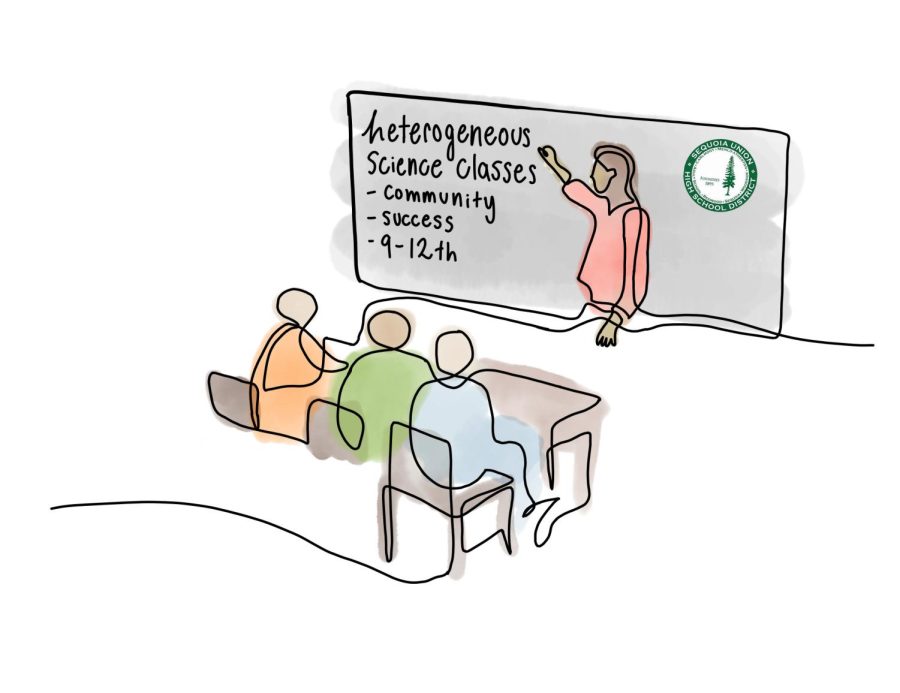Science signals significant diversification
March 7, 2022
The science department is planning new changes, although these changes won’t be present on campus and in student schedules until a couple years pass by for Sequoia High School.
One of the largest changes the science department is discussing for the future is the introduction of heterogeneous science classes. According to an education class (ED284) taught at Stanford, these are classrooms in which students have a wide range of previous academic achievement and varying levels of oral and written proficiency in the language of instruction. With heterogeneous classes, students are able to build deeper connections to those who are different from them, learning more about the world and other people.
“For science specifically, we are always asking: is what we’re offering equitable and serving all of our students?” science department chair Jessica Magallanes said. “Because of our focus on equity and thinking about, how do we build community and get students connected with each other, even if they’re coming from different experiences, different schools? The benefits of having students in a truly mixed or heterogeneous class is supported by academic research. That’s how you get kids to build community, develop friendships and relationships, and feel successful.”
The heterogeneous classes are set to offer all freshmen the same starting science class so they can better connect with students in the same age group, while also building connections that come with heterogeneous classes. As of now, all freshmen have the option to either choose physics, chemistry, or biology for their starting science classes. All of these classes are also open to other grades, so students are able to interact with a variety of age groups.
“Right now, if you look at the science offerings, almost all of them say 9 to 12. And there are pros of that too; for example I love being able to see freshmen connect with juniors. But if you’re talking about serving Science signals significant diversification all students with a wide range of emotional maturity and academic skills, having one age group in a class can help teachers do that better,” Magallanes said.
Building stronger connections with students from the same grade isn’t the only reason for the heterogeneity of these classes. Heterogeneous classes level the playing field, and allow those who came from different backgrounds to access the same material regardless of past experiences.
“One consequence of inequity in school systems in general, is when you look at the demographics of an IB course, compared to a non IB course, we tend to see a lot more of our BIPOC (Black Indigenous and People of Color) students in these non IB courses and we see more white students in the IB courses even though that’s not our percentage you see on campus,” Magallanes said. “One way to address that is you prepare everyone to take an IB course. And that’s what a freshman bio, the general chemistry, what it does is everyone who’s in there could choose to take it. We’re not separating any demographics right from the beginning…We’re all truly representing Sequoia in our science course. And then you choose based on your passion, not based on what a teacher told you you could or couldn’t do.”







